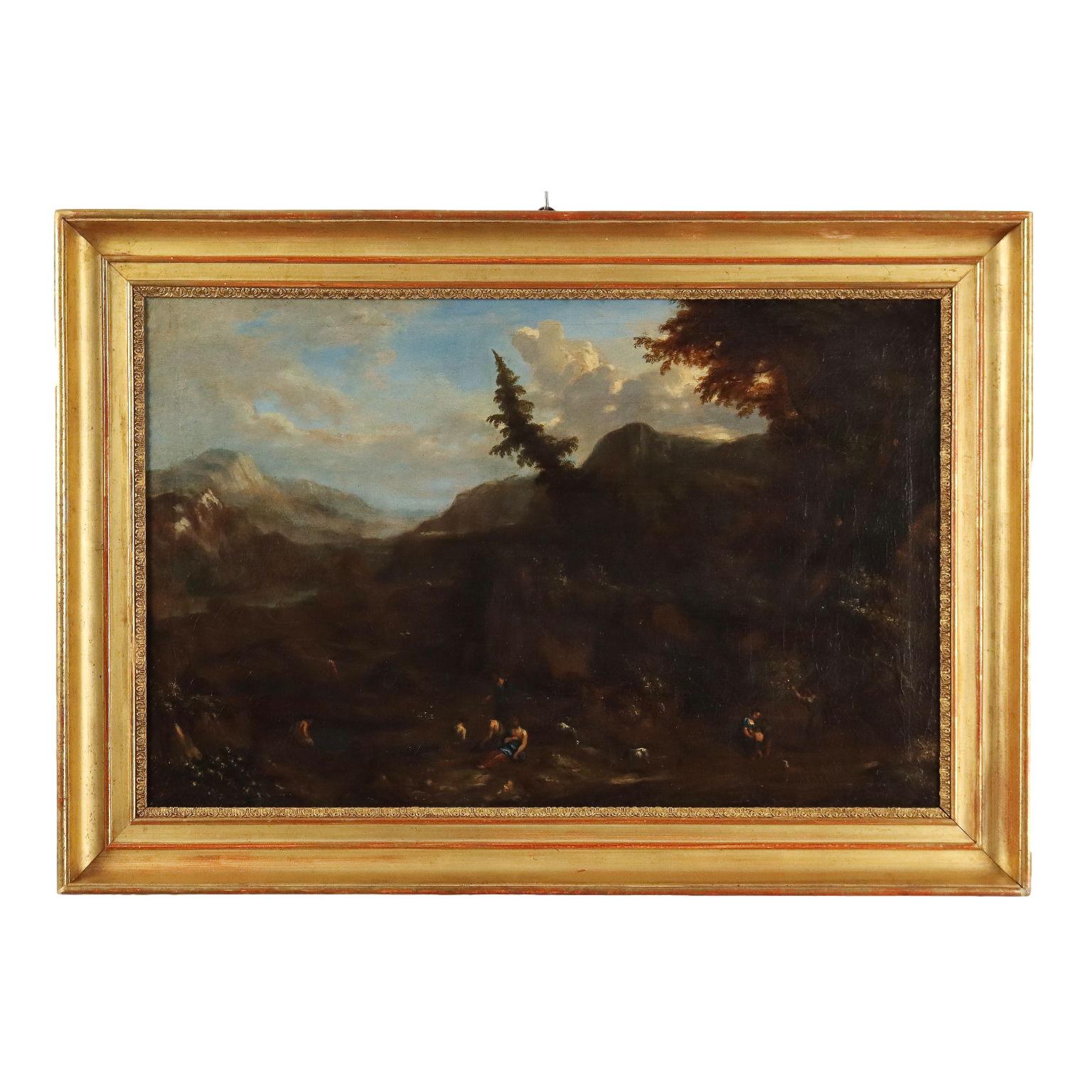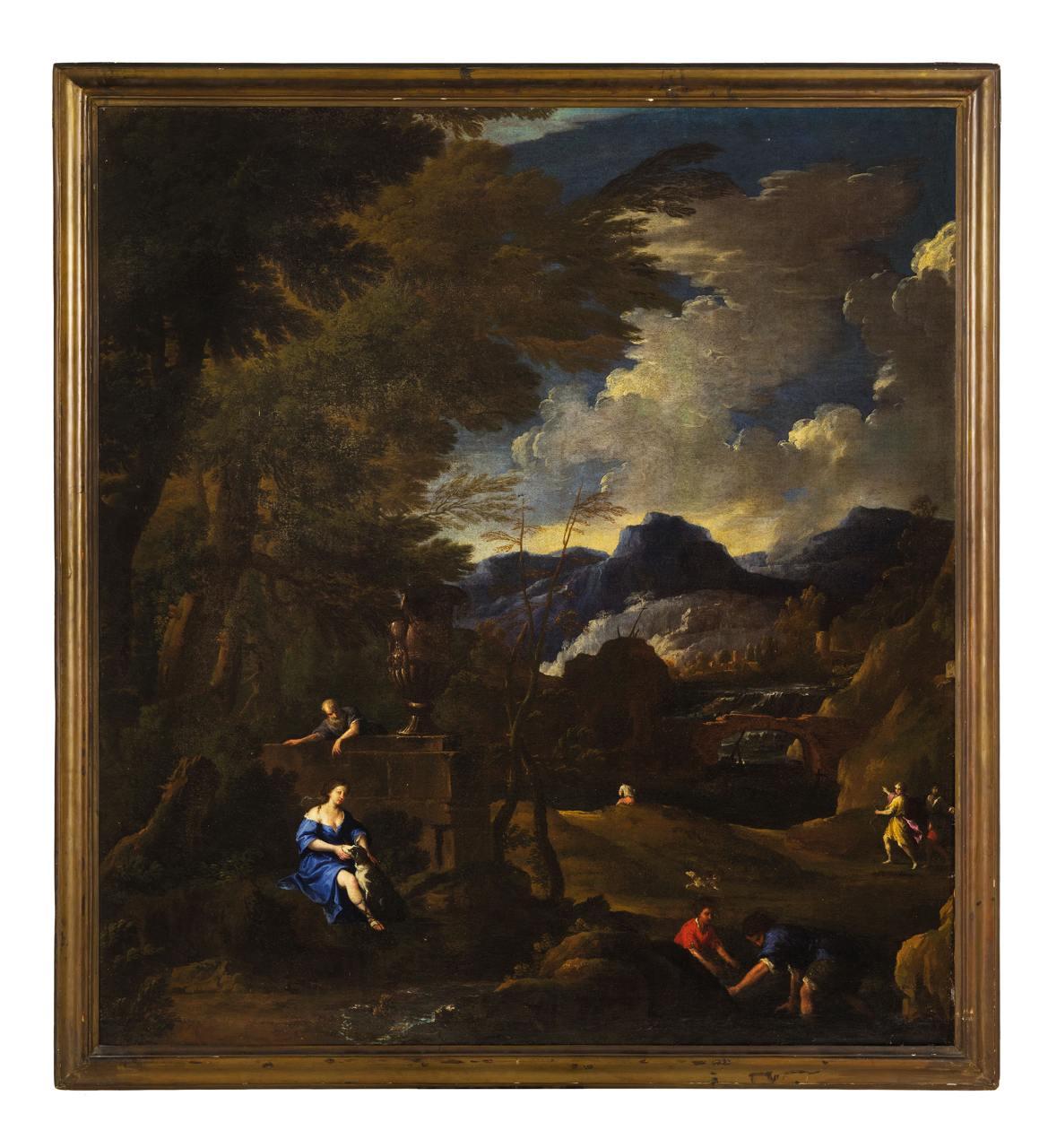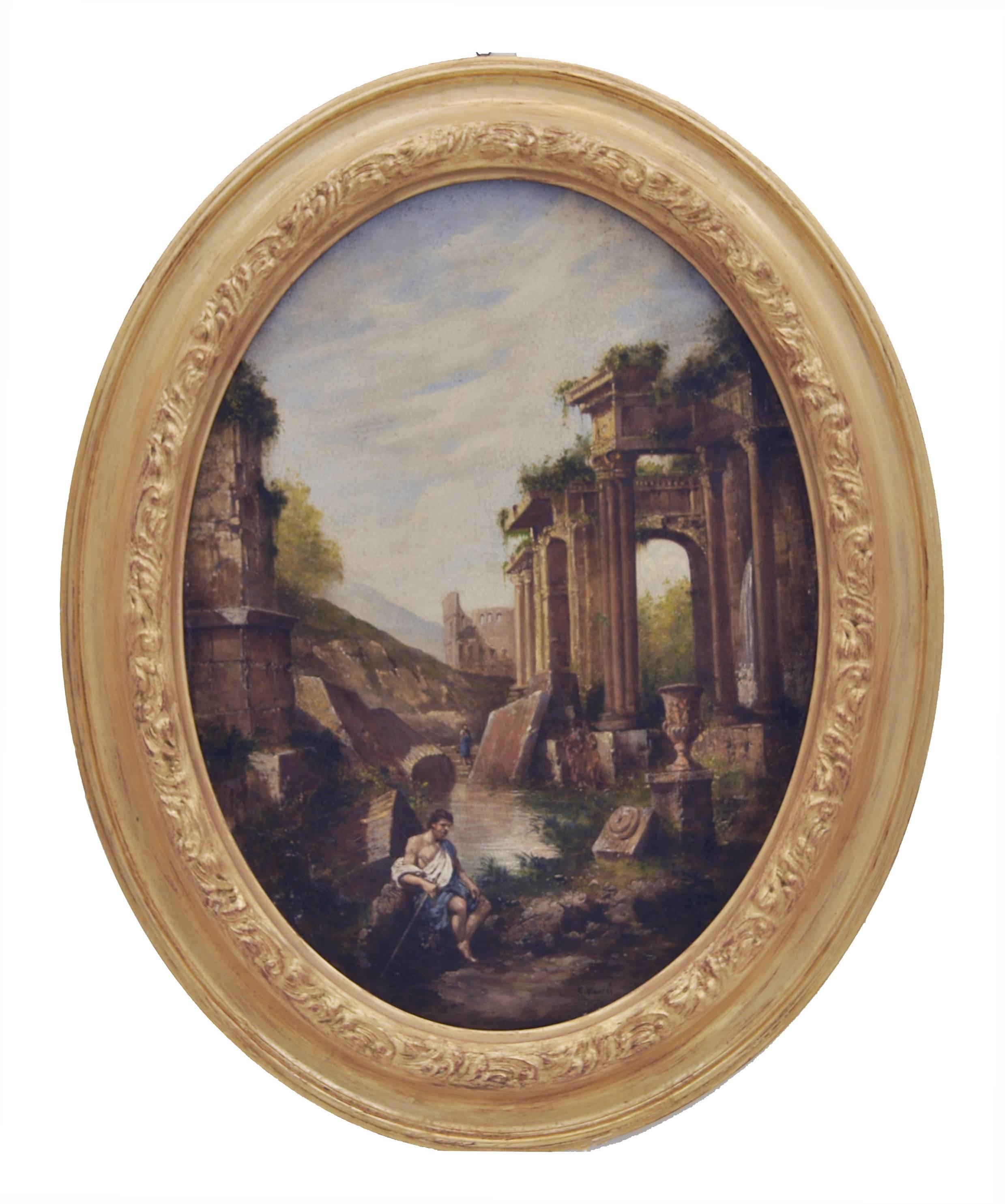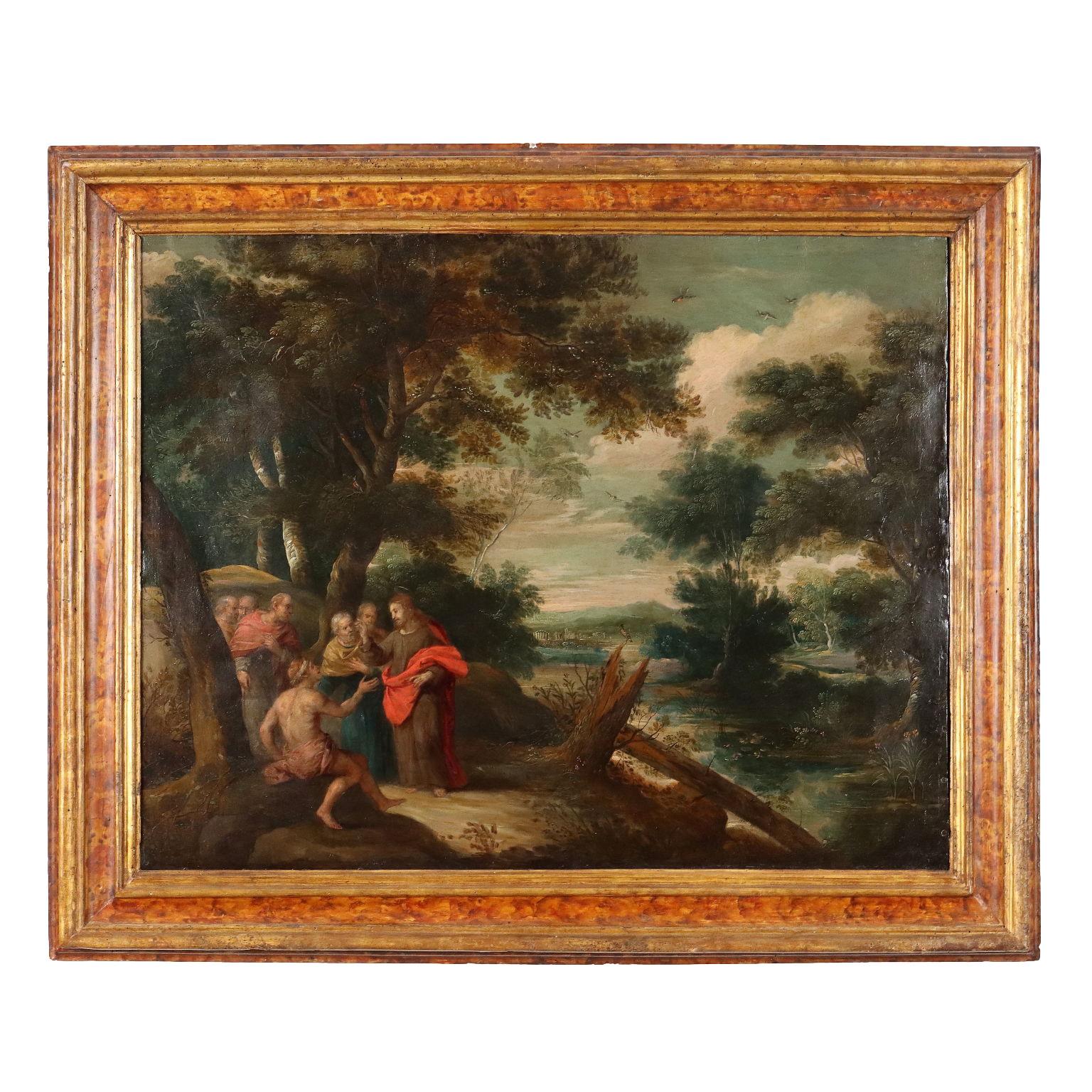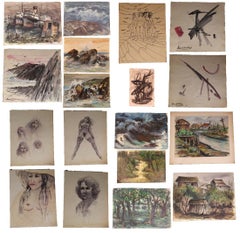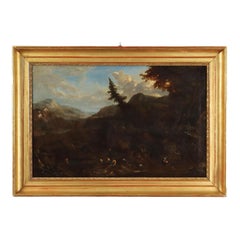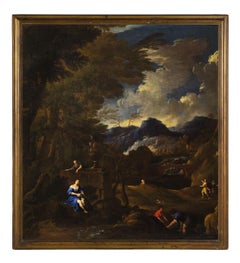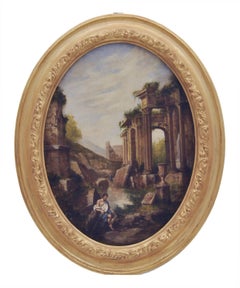Items Similar to Greek / Roman Naturalistic Allegory Painting
Want more images or videos?
Request additional images or videos from the seller
1 of 11
J.J. WalsheGreek / Roman Naturalistic Allegory Painting
$2,800
£2,114.77
€2,444.05
CA$3,927.43
A$4,367.68
CHF 2,286.28
MX$53,280.39
NOK 28,727.93
SEK 27,022.33
DKK 18,243.27
About the Item
Stormy landscape scene in which a Cupid-like figure seen in the clouds appearing to have shot a number of wounded and dying men in the foreground. The men have a number of women and children surrounding them mourning their loss.
Dimensions Without Frame: H 20 in. x W 30 in. x D 1 in.
- Creator:J.J. Walshe
- Dimensions:Height: 23.5 in (59.69 cm)Width: 33.75 in (85.73 cm)Depth: 2 in (5.08 cm)
- Medium:
- Movement & Style:
- Period:
- Condition:Canvas and paint are consistent with age.
- Gallery Location:Houston, TX
- Reference Number:Seller: A2019.0917.13271stDibs: LU55135011142

About the Seller
5.0
Gold Seller
Premium sellers maintaining a 4.3+ rating and 24-hour response times
Established in 1969
1stDibs seller since 2014
872 sales on 1stDibs
Typical response time: 11 hours
- ShippingRetrieving quote...Shipping from: Houston, TX
- Return Policy
Authenticity Guarantee
In the unlikely event there’s an issue with an item’s authenticity, contact us within 1 year for a full refund. DetailsMoney-Back Guarantee
If your item is not as described, is damaged in transit, or does not arrive, contact us within 7 days for a full refund. Details24-Hour Cancellation
You have a 24-hour grace period in which to reconsider your purchase, with no questions asked.Vetted Professional Sellers
Our world-class sellers must adhere to strict standards for service and quality, maintaining the integrity of our listings.Price-Match Guarantee
If you find that a seller listed the same item for a lower price elsewhere, we’ll match it.Trusted Global Delivery
Our best-in-class carrier network provides specialized shipping options worldwide, including custom delivery.More From This Seller
View AllClassical Naturalistic Style Italian Allegory Study
Located in Houston, TX
Classical style allegorical painting with puti and monarchy type figures floating within the clouds. The canvas is framed in a decorative gold frame.
Dimensions Without Frame: H 43.5...
Category
20th Century Academic Figurative Paintings
Materials
Oil
Naturalistic Landscape with Figures on a Boat
Located in Houston, TX
Oil painting of a river landscape with figures in a boat rowing along the foreground. The work is painted on board. It is framed in a decorative frame.
Dimensions without frame: H 24 in x W 36 in.
Artist Biography: William Joseph Shayer, senior was a self-taught artist, who began by painting decorations on rush-bottom chairs. He moved on to painting carriages in the town of Guildford, after which he started doing heraldic painting...
Category
19th Century Naturalistic Landscape Paintings
Materials
Oil
Sublime Naturalistic Desert Landscape Painting
By William Hoey
Located in Houston, TX
Sublime desert landscape painting was done in a naturalistic style. The work is signed by the artist in the bottom corner. It is a frame in a...
Category
20th Century Naturalistic Landscape Paintings
Materials
Oil
Lot of 17 James Woodruff Landscape, Abstract and Figurative Paintings
By James W. Woodruff
Located in Houston, TX
Lot of seventeen different paintings by artist James Woodruff. Includes four landscape paintings, six seascape paintings, two abstract paintings the la...
Category
20th Century Naturalistic Landscape Paintings
Materials
Oil, Graphite
Capriccio Landscape View with Figures
Located in Houston, TX
Capriccio painting in a greek or Italian style with women around a river. Capriccio is a fanciful architectural landscape painting. It was popular in Italy in the 18th Century. Most ...
Category
Late 19th Century Baroque Landscape Drawings and Watercolors
Materials
Gouache
Naturalistic Early Still Life Painting in a Newcomb Macklin Frame
Located in Houston, TX
Early still-life painting with statues and a painting of a reclining nude. The work is signed and dated by Dr. Joesph Klien from Atlanta, Georga in 1944. The work is framed in a Newcomb Macklin frame...
Category
1940s Naturalistic Still-life Paintings
Materials
Oil
You May Also Like
Landscape painting with figures, XVIIIth century
Located in Milan, IT
Oil painting on canvas. Central European school of the eighteenth century. Under a blue sky, a large, rather barren landscape is depicted, with the edge of a wood opening onto a rock...
Category
18th Century Other Art Style Landscape Paintings
Materials
Oil
Classical Landscape - French 17th century art Old Master oil painting
By Jean François Millet
Located in Hagley, England
This superb 17th century French Old Master oil painting is attributed to Jean Francois Millet. Painted circa 1670 it is a classical landscape with figures by a bend in a river in the...
Category
17th Century Old Masters Landscape Paintings
Materials
Oil
"Classical Landscape with Figures"
Located in Edinburgh, GB
Attributed to Jan Gerritsz. Stockman (1603–1661)
"Paesaggio Classico con Figure" (Classical Landscape with Figures)
Medium: Oil on canvas
Dimensions (Framed): 162 x 146 cm
Dimensions...
Category
17th Century Landscape Paintings
Materials
Canvas, Oil
LANDSCAPE - Giovanni Faliero - Italian School Oil on Canvas Painting
By Giovanni Faliero
Located in Napoli, IT
Landscape - Giovanni Faliero Italia 2005 - Oil on canvas cm. 80x60. Gold leaf gilded wooden frame cm. 100x80
Giovanni Faliero's oil painting is a tribute to the landscaping paintings...
Category
Early 2000s Italian School Landscape Paintings
Materials
Canvas, Oil
Painting with a Healing Scene 17th Century
Located in Milan, IT
Oil on copper. Flemish school of the seventeenth century.
The painting, attributed by oral tradition to Frans Francken the younger (1581 -1642), depicts a miraculous healing perform...
Category
17th Century Other Art Style Figurative Paintings
Materials
Oil
Pastoral scene
Located in Genève, GE
Work on canvas
Category
Mid-18th Century Italian School Landscape Paintings
Materials
Oil
$2,383
